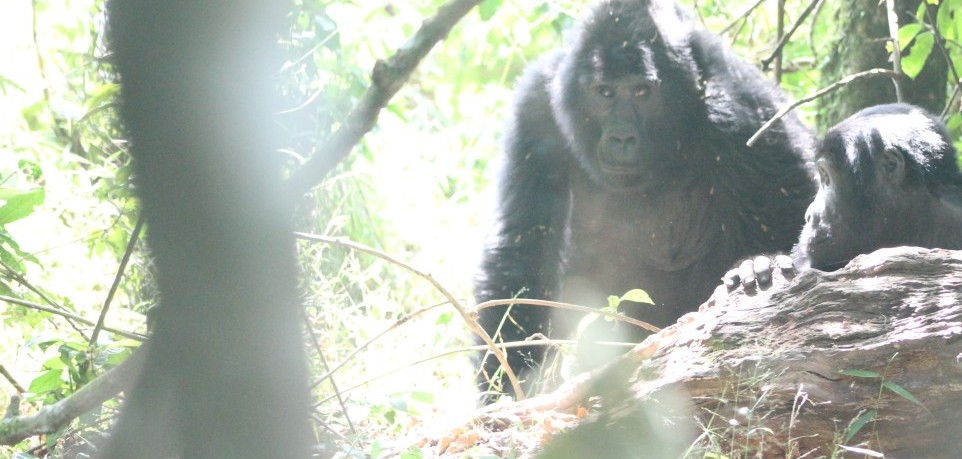
Gorillas are a species of great apes and belong to the genus "Gorilla". Further divided into two major subspecies of the western and eastern gorillas, also subdivided into four other subgroups. The western gorilla has the Congo River gorilla and western lowland gorillas while the eastern subspecies include the mountain gorillas and eastern lowland gorillas. Mountain gorillas are the most famous among the four subspecies.
Gorillas, in addition to other great apes like bonobos, orangutans, and chimpanzees share an amazing 98 percent similarity of their DNA with that of man. This has enabled these apes to develop traits similar to man like high intelligence, and easy use of tools when searching for food for example use of sticks to dig out ants in termite holes.
The mountain gorilla dwells in the Virunga mountain ranges. These ranges are made up of 8 volcanos with 3 of them. Being active whilst the rest are dormant and no volcanic activity has been recorded on them in recent years. This region is the only place where you encounter mountain gorillas since they can only live in the wild and are confined to this area.
In addition to occupying the slopes of the Virunga Mountains, gorillas also dwell in dense tropical rainforests at high altitudes of usually above 2500 meters above sea level. This environment necessitates gorillas to live in areas filled with natural streams and rivers, making people wonder if gorillas can swim.
Gorillas naturally tend to avoid water as much as possible. Gorillas only interact with water if it greatly calls for it, mainly while escaping a predator or crossing to another region. This proves and shows that gorillas are not natural swimmers and therefore cannot swim. Mountain gorillas related to chimps, bonobos, orangutans (the great apes), and humans are described by researchers as non-natural swimmers.
The fact that gorillas are not born natural swimmers is the right explanation behind most zoos constructing deep trenches of water encompassing the gorilla sections or other great apes like chimpanzees. Gorillas known as intelligent species recognize the danger of drowning in the water and therefore will avert tampering with water trenches around their environments.
Gorillas in the wild are rarely noticed interacting with water. This is partly because much of their diet involves moist plant matter including leaves, fruits, and bamboo shoots and they gain almost all the water content they need from their food. Contrary to other mammals, gorillas barely have to get to water points to drink water.
In addition to the moisture it gets from its food, gorillas supplement it with morning dew consumption while they feed in the morning. This means that gorillas do not require a regular water source for it to ensure their survival. This greatly decreases any chances of a gorilla getting adapted to swimming. Therefore, gorillas cannot swim and this answers the question some people ask themselves if gorillas can swim.
Gorillas belong to the genus Gorilla and are listed as critically endangered on the IUCN list.
Less than 15,000 gorillas are left roaming in the rainforests of Virunga massif and Bwindi impenetrable national park. However, with increased awareness about conservation and efforts by different bodies, the numbers are promising to increase shortly.
Gorillas are highly social animals and dwell in groups known as families headed by a sole dominant male called a silverback.
The silverback heads all decisions of where to eat and when to retreat from enemies but they fight till their death to stop any intruders from harming their precious families.
Mountain gorillas are only found in 3 countries in the whole world;
These countries include the Democratic Republic of Congo, Rwanda, and Uganda. These 3 have a total of four national parks where you can visit and trek gorillas. These are the Volcanoes National Park of Rwanda, Bwindi Impenetrable, and Mgahinga National Park in Uganda, as well as the Virunga National Park in D.R. Congo.
Plan a gorilla safari to any of these destinations and embark on the adventure of a lifetime to find out more about the gorillas and what they can or not do.